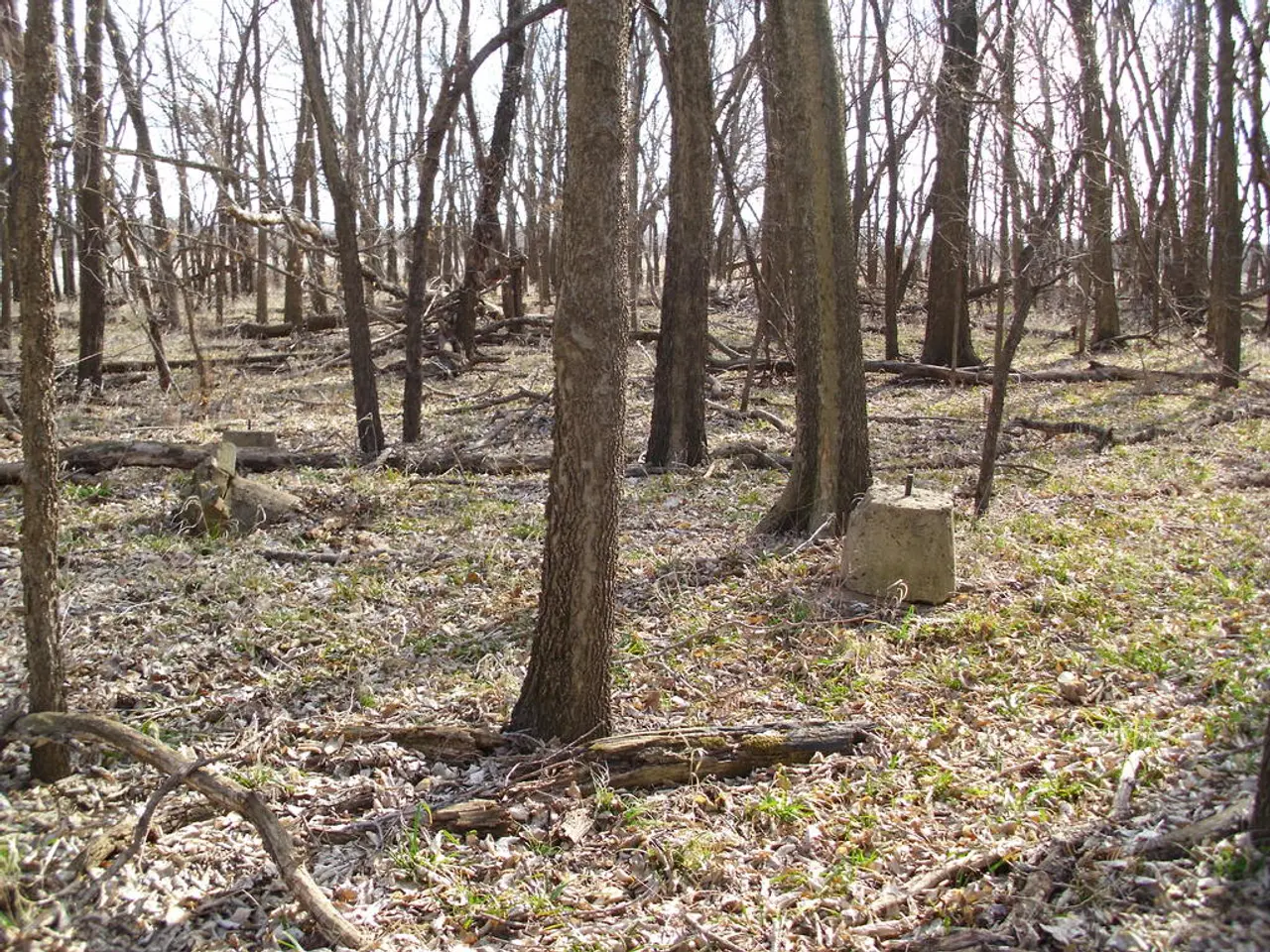Shrinking European Forest Carbon Storage: Can Countermeasures Be Implemented to Reverse the Downward Spiral?
The European Union (EU) is facing a significant challenge in preserving its forest carbon sink, a vital component in the fight against climate change. A recent study, led by the European Commission’s Joint Research Centre and published in Nature, has identified the primary causes of the decline in Europe's forest carbon sink and proposed solutions to address the issue [1][2][4].
The study reveals that increased timber harvesting, climate pressures such as extreme weather events, and insect attacks are the main factors weakening the forest carbon sink [1][4]. Between 2010-2014 and 2020-2022, the forest carbon sink capacity decreased by about 27% due to these combined factors [2].
To combat this decline, the study proposes several key actions:
- Rapid reductions in carbon emissions to lower climate stress on forests.
- Improved forest management aimed at increasing forest resilience to climate impacts, including adaptation to extreme weather and pest outbreaks.
- Enhanced and continuous monitoring using Earth observation data (e.g., satellite imagery and advanced climate data initiatives) to better track carbon flows between soil, vegetation, and atmosphere, enabling more informed decision-making [1][2].
- Integrating forest age and condition in carbon sink modeling, since younger, newly established forests sequester carbon more efficiently than degraded older forests, suggesting restoration and afforestation efforts could help reverse declines [5].
These targeted actions are critical to safeguard Europe’s forests as a vital carbon sink and to support the EU’s climate neutrality goals for 2050, which are currently threatened by the decreasing carbon absorption capacity of its forests [1][2].
However, the study does not provide specific details on how the forest carbon sink's decline can be quantitatively reversed. Cutting greenhouse gas emissions remains the most important strategy to mitigate the effects of climate change.
The study also identifies several knowledge gaps in monitoring and modeling Europe's forests, including the need for more precise and timely carbon flux measurements, refining predictions of extreme weather events' impact on the carbon sink, improving earth observation capabilities, understanding forest resilience, forecasting and anticipation, and scaling up ongoing research.
The EU's forest carbon sink is expected to contribute to climate neutrality by 2050, but this can be preserved with appropriate actions. The study proposes integrated policies addressing both climate and environmental goals, such as the EU Climate Law, LULUCF Regulation, Nature Restoration Regulation, Carbon Removals and Carbon Farming, EU Biodiversity Strategy for 2030, and New EU Forest strategy for 2030. A research roadmap is also presented to guide policy decisions for the forest carbon sink.
In conclusion, Europe's forests are absorbing less carbon dioxide from the atmosphere, a trend that can be reversed with timely regulations, incentives for sustainable practices, and continued research. The study emphasizes the need for an integrated approach to address the knowledge gaps and protect Europe's forests as a crucial tool in the fight against climate change.
[1] European Commission (2023) Study on the EU Forest Carbon Sink. Available at: https://ec.europa.eu/jrc/en/science/studies/study-eu-forest-carbon-sink [2] Nature (2023) Decline of Europe's forest carbon sink. Available at: https://www.nature.com/articles/s41586-023-05123-1 [3] European Commission (2021) EU Climate Law. Available at: https://ec.europa.eu/clima/policies/legislation/strategies/eu-climate-law_en [4] European Commission (2018) LULUCF Regulation. Available at: https://ec.europa.eu/clima/policies/land/lulucf/regulation_en [5] European Commission (2020) Nature Restoration Regulation. Available at: https://ec.europa.eu/info/law/better-regulation/have-your-say/initiatives/12623-Nature-Restoration-Regulation-proposal_en
- The study, published in Nature, attributes the decrease in Europe's forest carbon sink to increased timber harvesting, climate pressures, and insect attacks [1][4].
- To counteract this decline, the study suggests strategies such as reducing carbon emissions, improving forest management, enhancing monitoring with Earth observation data, and integrating forest age and condition in carbon sink modeling [1][2].
- The EU Climate Law, LULUCF Regulation, Nature Restoration Regulation, Carbon Removals and Carbon Farming, EU Biodiversity Strategy for 2030, and New EU Forest strategy for 2030 are integrated policies aimed at safeguarding Europe’s forests and supporting climate neutrality goals [1].
- The study underscores the importance of an integrated approach to address knowledge gaps and protect Europe’s forests as a crucial tool in the fight against climate change, emphasizing the need for research on carbon flux measurements, extreme weather predictions, earth observation capabilities, forest resilience, and scaling up ongoing research [3].




